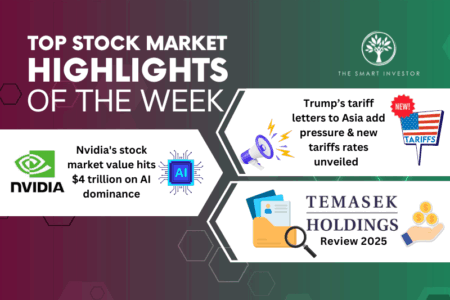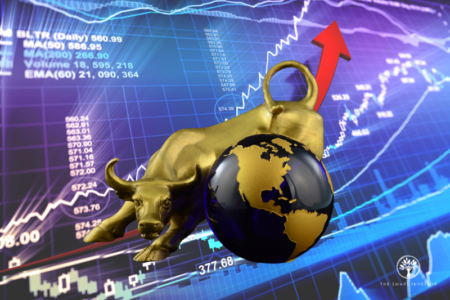We’re off to the races.
It’s been only a month into the year, and the US-based NASDAQ (INDEXNASDAQ: .IXIC) and S&P 500 (INDEXSP: .INX) have gained 4% each.
And that’s after both indexes enjoyed one of their best years in 2023.
With the rapid rise, there is a growing fear that the market may be due for a pullback.
When confronted with uncertainty, we should consider what we know (known knowns), what we know that we don’t know (known unknowns) and what we don’t know that we don’t know (unknown unknowns).
Framing the question into these three categories helps us focus on the right things.
Known knowns
So, will the stock market crash in the future?
Yes, it will.
Market declines have happened before and will happen again in the future.
Here’s the thing: you wouldn’t know when they would occur.
Nobody does.
We do know the odds for these declines, though.
According to wealth manager Ben Carlson, the S&P 500 undergoes a market correction (a 10% decline or more) once every two years, based on historical data.
The same frequency applies to the tech-heavy NASDAQ.
Bear markets, or when markets fall by 20% or more, do not happen as often.
For the S&P 500, such crashes happen once every seven years. The NASDAQ, however, experiences bear markets once every four years.
So, now you know the odds.
Here’s the important distinction: knowing these odds do not tell you when the market will crash.
For instance, just because the market has historically corrected once every two years, it does not mean it will happen like clockwork.
History has shown that a bull market can continue for years without a 10% correction.
The slide below from Covenant Wealth Advisors shows the market corrections in a year for the period between 1980 to 2023.
Within the graph, you will see long periods of time where the market does not experience a 10% decline.
Source: Covenant Wealth Advisors
So that’s what we know.
Now, let’s talk about things we do not know.
Known Unknowns
Cynics will point out that we do know a lot more than just market crash odds.
For instance, every month, there is a deluge of economic data available, ranging from gross domestic product (GDP) growth to interest rates.
Each data point provides a hint as to where the market is headed, the forecasters argue.
Except this assertion does not hold up in real life.
Take the two examples I shared in my latest Business Times article.
“In 2022, the US Federal Reserve raised interest rates from zero to between 4.25% and 4.5%. As you know, the stock market suffered one of its worst performances during this period.
When two trends coincide with one another, it is tempting to put two and two together and conclude: interest rates rose, and therefore, that’s why the stock market fell.
Except we can’t say the same about 2023.
Last year, interest rates were hiked again, increasing by another percentage point to between 5.25% and 5.5%. This time around, the stock market did not fall but instead, staged a rally.
The contrast between 2022 and 2023 is a timely reminder that correlation is not causation.”
Similarly, a rising GDP doesn’t always translate into stock market gains:
“Speaking of trends, China’s GDP has grown from around US$493 billion in 1992 to an astonishing US$18 trillion in 2022, according to data from the World Bank.
The annualised GDP growth rate for this period is almost 12 per cent.
But alas, the same cannot be said about the Middle Kingdom’s stock market returns.
The MSCI China index, which has been around since the end of 1992, has recorded negative gains from its inception till the end of 2023.
In other words, the rapid GDP increase has not translated into positive stock market returns, even after more than 30 years.”
In essence, as the saying goes: “Not everything that can be counted counts and not everything that counts can be counted”
Said another way, not every data point is worthy of an investor’s attention.
A set of information can be available and known, but it does not mean that it has practical use for investors.
Get Smart: The Spectacle of the Unknown Unknowns
Finally, we have the unknown unknowns.
By their very nature, it’s not possible to know ahead of time what calamities the global economy or stock market will experience in the future.
The rapid spread of the pandemic is an example.
Few saw it coming, let alone the repercussions of the lockdowns that followed.
But all is not lost.
We do know which companies have survived and thrived over the past three years — these stocks , curated by the strength of its business, are a gift for investors today.
So, instead of worrying over what the stock market will do next, why not curate a watchlist of stocks for yourself?
If the stock market falls, you will know ahead of time what stocks you want to buy.
Alternatively, you can choose to invest a little and wait for a better price to come your way.
The opportunity is there for you to make the best out of the real-world data available at your fingertips.
In time, it will be the gift that keeps on giving.
This could be the fastest way to jump from a “newbie” investor to a seasoned pro. Our beginner’s guide shows everything you need to know to buy your first stock and beyond. Click here to download it for free today.
Follow us on Facebook and Telegram for the latest investing news and analyses!
Disclosure: Chin Hui Leong does not own any of the stocks mentioned.




